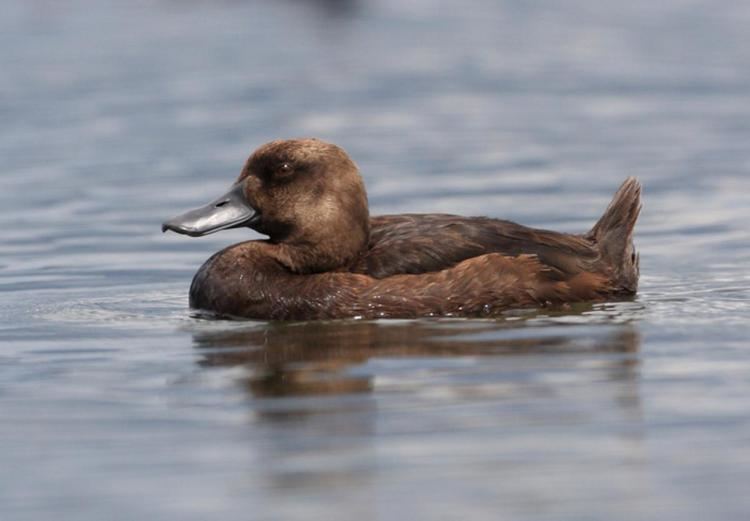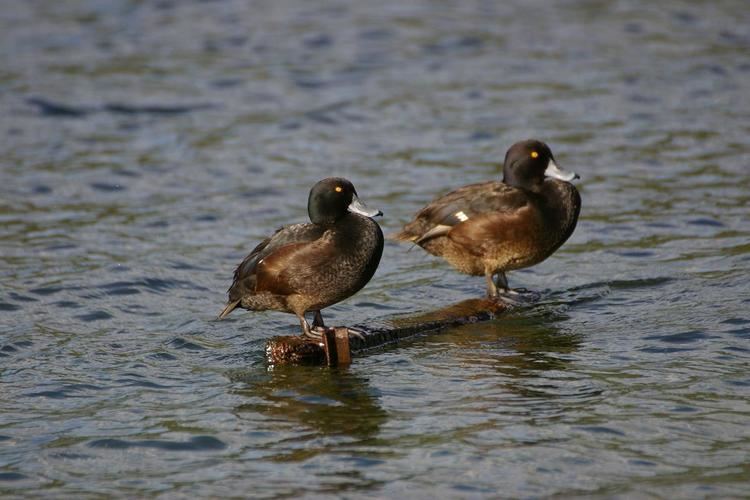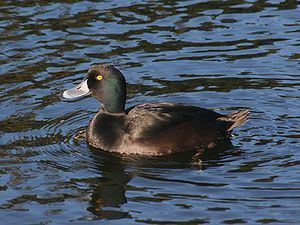Subfamily Aythyinae Rank Species | Phylum Chordata Genus Aythya Higher classification Aythya | |
 | ||
Similar Bird, Aythya, Paradise shelduck, Australasian shoveler, Hardhead | ||
New zealand birds new zealand scaup or black teal swimming and diving at kiwi house
The New Zealand scaup (Aythya novaeseelandiae) commonly known as a black teal, is a diving duck species of the genus Aythya. It is endemic to New Zealand. In Maori commonly known as papango, also matapouri, titiporangi, raipo.
Contents
- New zealand birds new zealand scaup or black teal swimming and diving at kiwi house
- New zealand birds australasian shoveler with new zealand scaup and grey teal
- Description
- Feeding
- Distribution
- Life cycle
- References

New zealand birds australasian shoveler with new zealand scaup and grey teal
Description

Overall dark brown/black colours. The male has a striking yellow eye and a dark coloured (greenish) head. The female is similar to the male, but without the yellow eye and has a white face patch during breeding season. A white wing bar can be seen in both sexes when in flight.
Feeding

The scaup is a diving duck which may submerge for twenty to thirty seconds and go down three metres to look for aquatic plants, small fish, water snails, mussels and insects. It is sometimes seen with the Australian coot (Fulica atra); it is thought that the scaup takes advantage of the food stirred up by the coots as they fossick for shrimps.
Distribution

It is found throughout both the North and South Islands of New Zealand in deep freshwater lakes and ponds. Unlike other members of this genus, the scaup is not migratory, although it does move to open water from high country lakes if they become frozen in winter.
Life cycle

They nest from October to March. They lay five to eight cream/white eggs in a nest close to water, often under banks or thick cover. The nest is usually lined with grass and down. The eggs are incubated for four weeks by the female. The newly hatched ducklings begin diving for food on their first outing.
